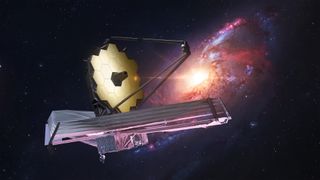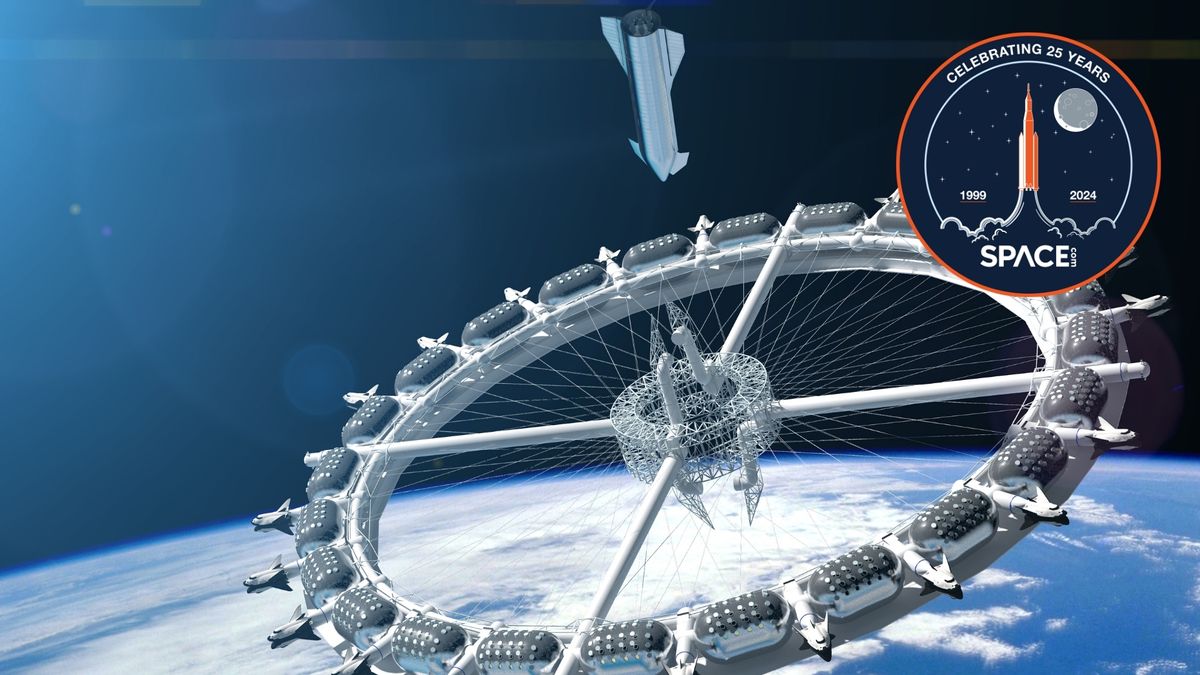Celebrating 25 years of covering countless advancements in space exploration and astronomy, Space.com hosted a live virtual panel to discuss some of the most impactful discoveries and what may still be yet to come.
Joining Space.com’s Editor-in-Chief Tariq Malik, who moderated the discussion, were three panelists, including Dr. Sara Seager, an astrophysicist and professor at Massachusetts Institute of Technology, Cambridge, Dr. John Mulchaey, director of the Carnegie Observatories overseeing the Giant Magellan Telescope, and Dr. Tom Marshburn, chief medical officer for Sierra Space and former NASA astronaut and three-time spaceflyer.
The panel, held on July 17 in honor of Space.com’s 25th anniversary, focused on accomplishments in the fields of exoplanet research, the search for life, observing the early universe and human spaceflight, as well as new technology that could open even more doors to discovery.
“We now know of 1,000s of planets around nearby stars, and there have to be trillions of them in our galaxy alone,” Seager said. “So just the fact [of] moving that from science fiction to science fact is a momentous achievement of the last quarter century.”
Over the last two and half decades, we’ve also made great strides in probing the early universe, revealing the first stars and galaxies that formed after the Big Bang, which, in Mulchaey’s opinion, is one of the biggest achievements in astronomy.
It’s a “field that’s actively changing everyday right now with the James Webb Space Telescope. It’s super exciting,” Mulchaey said. “25 years ago, I was just out of grad school and we only knew of objects that we could see maybe 10 billion years back in time, and now we’re almost back to the Big Bang.”

Mulchaey oversees Carnegie’s main campus in Pasadena as well as The Observatories’ large-telescopes facility in Las Campanas, Chile, where the Giant Magellan Telescope — the world’s largest optical telescope — is currently under construction. Expected to become operational by the early 2030s, the telescope will survey the distant universe and look for signs of life beyond Earth.
Human spaceflight has also changed tremendously over the past 25 years, from the Space Shuttle era, to the evolution and continuous habitation of the International Space Station and SpaceX, which kickstarted commercial spaceflight.
“Figuring out how humans can continue to live in space [for] six months to a year … I think that’s one of the greatest things; a barrier that we’ve broken down, that’s going to enable us to spend years in space,” Marshburn, who flew on three spaceflights, including STS-127, Expedition 34/35 and Expedition 66/67 as part of the SpaceX Crew-3, and now works for the commercial space company Sierra Space, said during the panel. He later explained how the private sector utilizes “advanced innovation, agility and speed to make sure that we can continue everything we need to do in low Earth orbit to enable NASA to continue its exploration mission.”
Sierra Space’s Dream Chaser space plane is slated to launch later this year, expanding capabilities for transporting cargo to the space station. The company is also working on an inflatable habitat, which would offer greater access to space.

“Several companies are coming together to provide this kind of destination for low Earth orbit,” Marshburn said, adding that the goal is to “get into lunar orbit and to have habitats on the lunar surface; to include ways of getting out of your landing vehicle into that habitat [such as] tunnels, so we can begin to develop a space base.”
And, with the growing number of private spaceflight companies who can help mass produce and launch technology, Seager argues is the opportunity for smaller focus missions that can be accomplished in less time.
“It can be a huge game changer,” Seager said. “Instead of waiting 20, 30, 40 years for your mission, to have lots of frequent small missions that build on each other, or if you dead end, they go off in a new direction.”
This, however, requires a “paradigm shift,” according to Mulchaey. The panelists agreed that more focused projects can be beneficial and they expect to see more of them in the future as “complementary” to larger NASA initiatives.
The panelists also discussed the future of artificial intelligence, how to best search for signs of life, ethical use of space and what they each hope to see accomplished in the next 25 years.
Visit Space.com to catch up on our 25th anniversary coverage.













